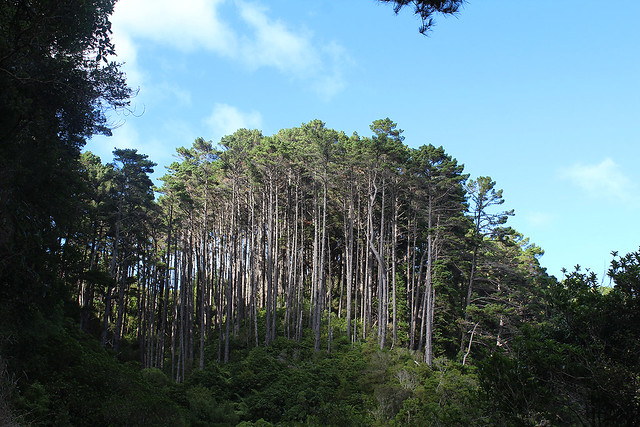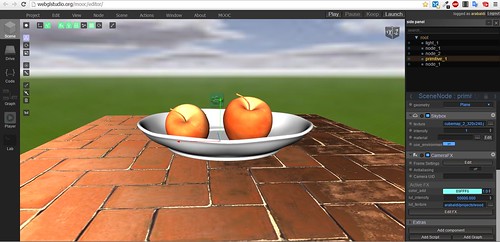What You'll Be Creating
Water is very tricky to draw, because we can see it through its interaction with objects nearby, and it doesn't look like an object itself. But "tricky" doesn't mean "impossible"—with a proper method you can create believable water using pencils only!
In this tutorial I will show you how to draw waves under an object, a reflection on a big body of water (like a lake or sea), and a waterfall.
What You Will Need
Some sheets of paper
Hard pencil (HB)Medium soft pencil (2B)Soft pencil (5B or lower)Pencil sharpenerEraser (optional)
Hard pencil (HB)Medium soft pencil (2B)Soft pencil (5B or lower)Pencil sharpenerEraser (optional)
1. Draw Water in Close-Up
Step 1
First, prepare some kind of object—water will reveal itself by what's reflected in it.

Step 2
Use a hard brush to sketch the outline of the reflection.

Step 3
Draw a wavy pattern under the object. The farther the waves are, the tighter they should be.

Step 4
The waves intersect with each other, creating outlined areas. Fill some of them:

Step 5
Cross the white areas between the shapes with thick lines.

Step 6
Take the softest pencil and press strongly to darken parts of the shapes. Which parts?
If your object is bright, darken the parts outside of its reflection.If your object is dark, darken the parts within its reflection.


Step 7
Take a soft pencil and fill in the areas between the dark shapes.

Step 8
Use the same pencil to sharpen some of the shadows within the reflection. I also added a shadow under the tail.

Step 9
Take the softest pencil and use it to accentuate some parts.

2. Draw a Lake/Sea
Step 1
Technically, we could use the same method as before to draw a reflection on a lake or sea, but because they're so big, it wouldn't be very effective. Instead, we can use a shortcut.
Of course, first you need something that will be reflected in the water. You can use my tutorials to create it:
Step 2
It's very important to use a proper perspective for the reflection. You can't simply mirror the shore!

Step 3
Use a hard pencil to sketch the reflection. It doesn't need to be a very faithful copy of the shore.

Step 4
Take the softest pencil and draw the waves under the dark objects. The sky is very bright, so it doesn't need to be reflected. That's how we'll save some time!

Step 6
Press even harder when close to the shore to make the border between water and land more visible.

3. Draw a Waterfall
Step 1
The waterfall is basically water flowing down over something, so we need to create some kind of base for it first. A pile of rock will be perfect for this purpose. You can learn how to draw it from my tutorial How to Draw Grass, Ground, and Rocks.

Step 2
Use a hard pencil to shade the ground under the water very subtly.

Step 3
Use the same pencil to draw the streams of water flowing down. If necessary, use an eraser to lighten some shaded parts.

In the "vertical" parts, don't draw the streams as simple vertical lines, but create 'V's out of them.

Step 4
Shade the "cave" under the waterfall by filling some space between the streams. Use a softer pencil for this.

Step 5
Make the rims of the rock shelves shiny by accentuating parts of the streams on them.

Step 6
Accentuate the streams by shading parts of them. Make sure that 'V's and rotated 'V's are clearly visible in the pattern of flowing water.

Step 7
Take the softest pencil and accentuate some parts of the streams, especially in the shadow and next to dark parts that could be reflected by water.

Step 8
Take a hard pencil again and sketch the foam under the waterfall.

Step 9
Draw the direction of water coming radially from this point.

Step 10
Draw and shade the water in this area using soft pencils.

Step 11
Use a clean eraser to add some shine in the most illuminated places.

Good Job!
Did you like this tutorial? Make sure you try others in the Drawing Nature series. And if you want to make your drawings even prettier before posting them on the Internet, try these tutorials:
How to Draw Water in Nature
 Reviewed by Aracelli Muñoz Baldi
on
7:27:00 PM
Rating:
Reviewed by Aracelli Muñoz Baldi
on
7:27:00 PM
Rating:
 Reviewed by Aracelli Muñoz Baldi
on
7:27:00 PM
Rating:
Reviewed by Aracelli Muñoz Baldi
on
7:27:00 PM
Rating:





No comments:
¿Qué te parece este artículo?